Best Bedding For Chickens
- January 11, 2024
- 13 comment
The process of getting comfortable is often colloquially referred to as “nesting,” and no one knows how to create a cozy nook better than chickens. Whether it’s for roosting or laying those scrumptious eggs, chickens have a knack for making their space just right. A crucial aspect of planning for your chickens involves making the essential decision of selecting the right type of bedding for their coop.
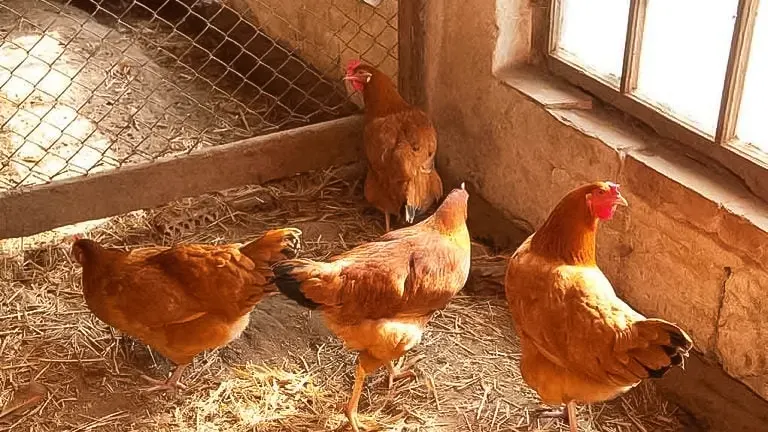
Beyond just providing comfort, bedding plays a multifaceted role. It must not only be comfortable but also serve as a tool for controlling odors, an effective absorber, and a suitable nesting place for your chickens. The cleanliness and moisture level of a chicken coop significantly impacts its overall hygiene, as a dirty and humid environment becomes an ideal breeding ground for bacteria and parasites. Thus, choosing the right bedding is more than just a comfort consideration; it’s a vital step in maintaining the health and well-being of your feathered companions.
List For Best Bedding For Chickens:
- In the Brooder
- Adult Chickens
- Straw Bedding
- Hay vs. Straw
- Shavings Bedding
- Newspaper and Cardboard Bedding
- Hemp and Hulls Bedding
- Recycled Paper
- Deep Litter Method
- Composting with Chicken Manure
Optimal Bedding Choices for Chickens:
When it comes to selecting the best bedding for your chickens, pine bedding emerges as a popular choice due to its affordability, relative absorbency, and minimal impact on the well-being of chickens. However, it’s essential to delve into the nuances to make an informed decision that aligns with your flock’s health.
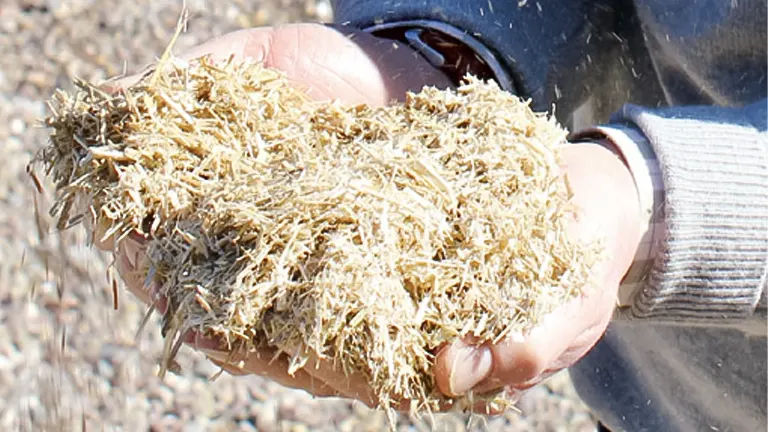
Pine bedding, though widely used, has its share of considerations. According to Byrum, a seasoned expert in poultry care, the choice of bedding depends significantly on the cleaning routine. Pine bedding, while economical and reasonably absorbent, can be a subject of debate in poultry husbandry circles. The dust generated from pine bedding has the potential to be toxic, and if left uncleaned for extended periods, it may foster mold, and bacteria, and retain ammonia, posing health risks to your chickens. Hence, regular cleaning is imperative regardless of the bedding choice.

Moreover, Byrum highlights that both pine and hardwood shavings can contribute to respiratory issues in chickens. If the coop is sealed immediately after adding fresh shavings, the chickens may inhale the dust, leading to respiratory problems. This emphasizes that the most common option may not necessarily be the best, and careful consideration is warranted.
Byrum further points out that continuous exposure to cedar dust can irritate the nose and throat in humans, suggesting that avoiding dust particles is essential. This insight underscores the importance of not only choosing bedding that meets practical considerations but also prioritizes the respiratory health of both chickens and caretakers.
1. In the Brooder
Newborn chicks, being delicate creatures in the early stages of their lives, are in the process of familiarizing themselves with the world around them. Despite their youth, their instincts are already quite robust.
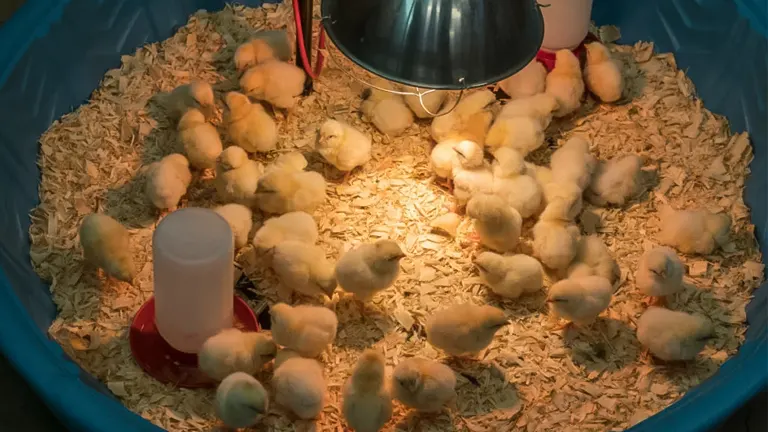
Once they gain enough strength, these chicks instinctively engage in pecking and scratching at their surroundings. Selecting an appropriate bedding material that offers both softness and effective absorption is a crucial aspect of ensuring a healthy brooding environment. Shavings stand out as an excellent choice, provided they are not excessively small or prone to generating dust.
It is worth noting that should the chicks decide to explore and nibble on the shavings, it generally poses no harm. In most instances, they quickly discern that the taste is not particularly appealing. However, to err on the side of caution, opting for larger-cut shavings would likely be the optimal choice to ensure the well-being of the chicks.
2. Adult Chickens
While chickens undoubtedly bring joy to any flock, let’s be honest they can be rather messy creatures. They exhibit a penchant for leaving droppings scattered around, even during their nightly roost, and their waste tends to be on the wetter side. Adding to the chaos, they seem to have a talent for creating additional mess.
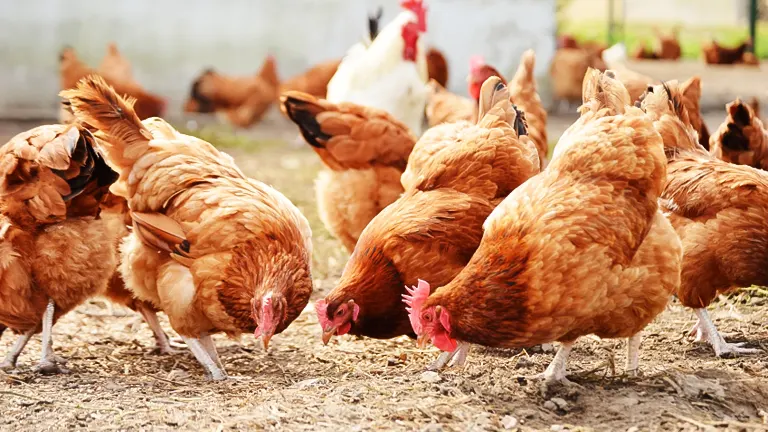
I’m still puzzled as to how, within just 24 hours, they can turn their water into something resembling a mud puddle. That’s precisely why I consistently recommend investing in an automatic chicken waterer.
When it comes to bedding options, the choices are diverse, and what suits one person may not necessarily be the best fit for another. There’s no definitive right or wrong solution in this regard. Let’s delve into the advantages and disadvantages of some of the most popular types of chicken litter to help you make an informed decision for your flock.
3. Straw Bedding
Opting for straw as bedding is akin to embracing a traditional, time-tested approach. In an era before the convenience of wood chippers and pre-packaged shavings from local supply stores, farmers relied on straw for their chicken coops.
Reflecting on this historical usage, I often find myself thinking that if it was deemed suitable by previous generations, it surely remains a viable option for me today.
While straw proves effective as bedding, it’s essential to delve into certain considerations when utilizing long, dried grass for chicken litter. This classic choice deserves a closer look to ensure its continued relevance and suitability for contemporary poultry care.
Pros
- Accessibility: Straw stands out for its widespread availability, making it easy to procure in most regions. Whether through classifieds or local farmers, obtaining straw for your chickens is a convenient process.
- Entertainment Value: Chickens revel in the joy of scratching and playing in straw, adding an element of amusement to their living environment.
- Insulating Properties: The hollow nature of straw makes it an effective insulator, providing warmth and comfort for chickens, particularly in colder climates.
Cons
- Limited Absorption: Despite its merits, straw falls short in terms of absorption. Regular removal and replacement are necessary due to its limited ability to retain moisture.
- Challenging to Clean: Cleaning straw bedding can be a labor-intensive task due to issues like knotting, matting, and a lack of clumping, requiring extra effort to maintain a hygienic coop.
- Odor Challenges: The limited absorption capacity of straw contributes to the prevalence of odors, making it a less favorable choice for those prioritizing a fresh-smelling coop.
- Pesticide Concerns: A potential drawback of straw is the presence of pesticides. Many farmers use pesticides on straw, and this poses a risk when used in conjunction with chickens, as exposure to these chemicals is not conducive to their well-being. Careful consideration and source verification are necessary to mitigate this concern.
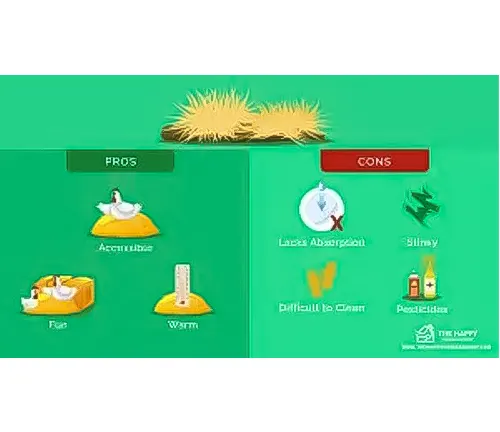

4. Hay vs. Straw
According to Byrum, hay and straw rank as the second most common bedding materials used in chicken coops. Their affordability and soft texture make them appealing to chickens. However, caution is advised when using hay for chicks in brooders, as they may ingest it. Similarly, the use of pine shavings with young chicks should be limited to avoid potential toxicity.
While both hay and straw excel at absorbing moisture, they share a drawback in releasing that moisture, necessitating regular cleaning to prevent the buildup of ammonia.
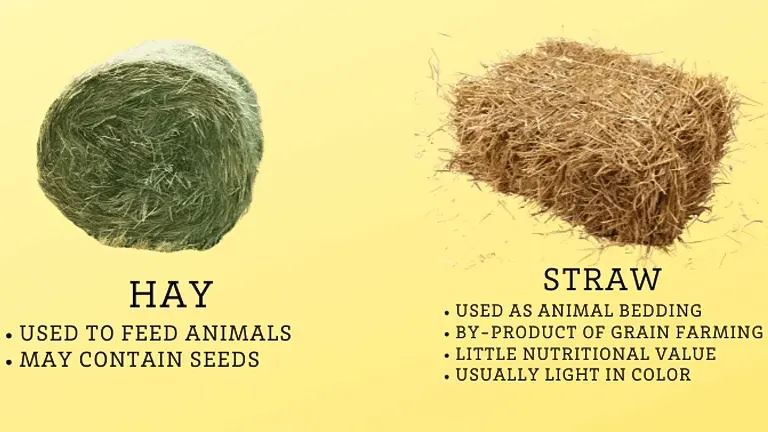
Byrum recommends chopped straw over hay for several reasons. Despite both materials potentially harboring pathogens, chopped straw offers lower dust levels and enhanced absorbency. The compressing process during bale production effectively reduces dust, addressing a common concern associated with these bedding choices.
5. Shavings Bedding
Shavings stand out as a preferred choice among chicken enthusiasts, available in various wood forms, with Pine and Cedar being the most common. Despite discussions about the potential toxicity of Cedar, Pine shavings remain a popular option due to their notable benefits, such as effective odor control and ease of cleaning. The practical advantages of shavings become especially apparent when compared to the challenges associated with knotted and wet straw.
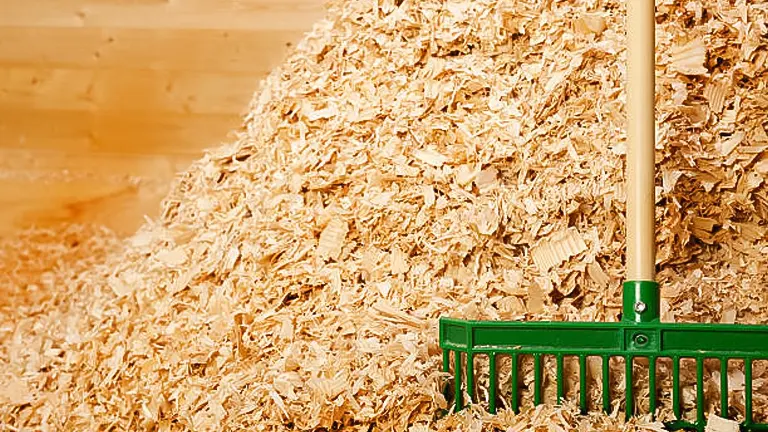
Pros
- Outstanding Absorption: Shavings exhibit excellent absorption capabilities, efficiently managing moisture in the coop environment.
- Accessibility: Shavings are readily available at local feed stores, ensuring convenient procurement for chicken owners.
- Ease of Cleaning: Compared to straw bedding, shavings offer a more straightforward cleaning process. Fluffing and forking up shavings is a task simplified in comparison.
- Effective Odor Control: Thanks to their superior absorbency, shavings excel in controlling odors, providing a more pleasant and hygienic living space for chickens.
Cons
- Cost Considerations: Depending on the size of the coop, the use of shavings can contribute to higher expenses, making cost a potential drawback.
- Crop Impaction Risk: Chickens’ natural instinct to scratch and peck might lead them to ingest shavings, posing a risk of crop impaction and necessitating vigilant monitoring.
- Dust Potential: The size of shavings plays a role in their dustiness, with smaller shavings having a higher likelihood of causing respiratory issues within the flock. Careful consideration of the particle size is essential to mitigate potential respiratory concerns.
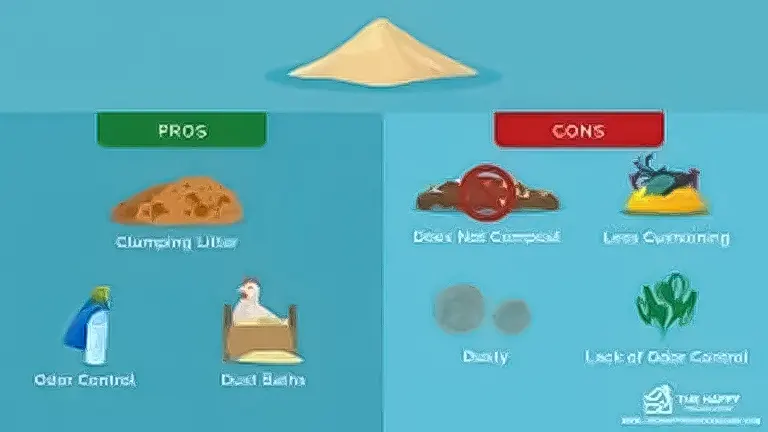
6. Newspaper and Cardboard Bedding
According to Byrum, opting for newspaper and cardboard bedding offers both advantages and considerations, presenting a balanced perspective on this alternative.
On the positive side, these materials provide a cost-effective option due to their compressed nature, offering ample product for the money spent. However, the downside entails a more frequent cleaning requirement, creating a trade-off that Byrum humorously describes as “six of one, half a dozen of the other,” playfully avoiding an egg-related pun.

When it comes to baby chicks, Byrum leans towards recommending newspaper. Most newspapers use plant-based inks, and she advises against glossy paper, suggesting the use of regular flat newspaper at the bottom, supplemented with shredded paper on top for improved traction. While Byrum acknowledges the use of grates in their brooders to allow waste to pass through, she recognizes that many individuals utilize box or tote-based brooders. She amusingly warns against overly thick bedding to prevent the comical scenario of losing chicks within it.
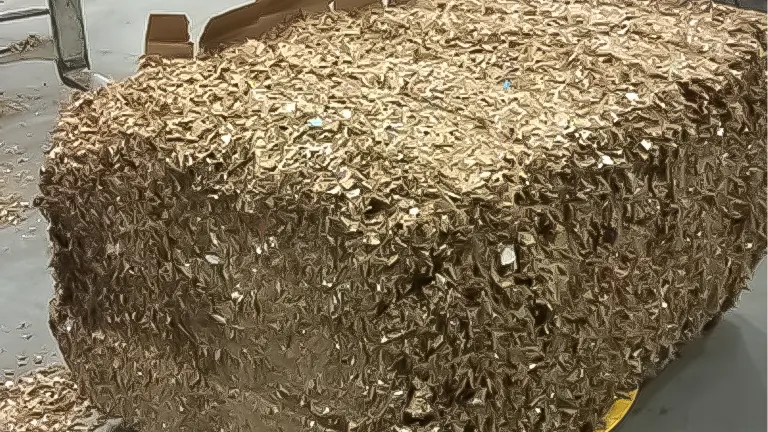
For those seeking a pre-consumer shredded paper alternative, Byrum highlights PitMoss Roost. Noting its ease of cleanup simply picking up the waste-laden clumps and replacing them—she acknowledges its relatively higher cost compared to traditional bedding options. Both newspaper and PitMoss are touted for their easy composting capabilities.
PitMoss’s claims on their website suggest that it outlasts pine shavings fourfold, significantly reduces odor, and contributes to healthier birds. Described as akin to hamster bedding in composition, PitMoss Roost offers an intriguing option for those looking to explore innovative and eco-friendly bedding choices for their poultry.
7. Hemp and Hulls Bedding
Hemp emerges as a viable alternative for chicken bedding, although, as noted by Byrum, it may not be as easily accessible and tends to be pricier. The positive aspect, however, lies in its efficiency, as less quantity is required.
With low mold levels, hemp can be utilized as deep litter, and its ammonia retention is manageable with proper ventilation. Comprising leftover stalks and dried leaves, hemp bedding, reminiscent of straw, stands out as one of the superior options. Its versatility allows usage in nesting boxes or within the coop’s run area.
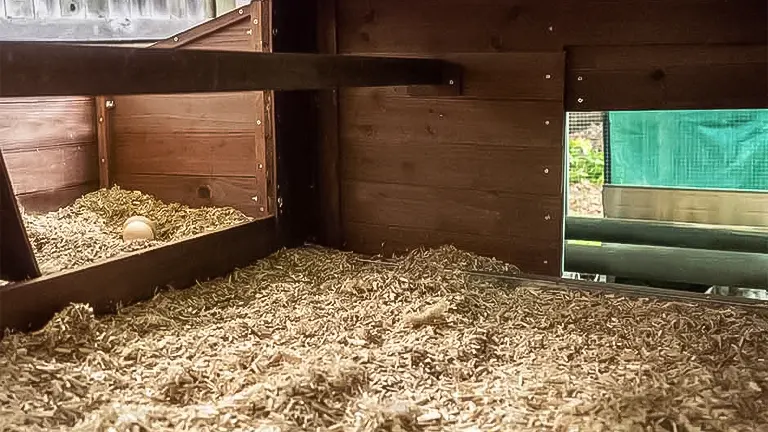
In contrast, rice hulls, peanut hulls, and corncobs are deemed less than ideal for chicken bedding. Their lower absorbency, coupled with their organic nature, demands meticulous cleanliness upkeep. Elevated mold levels and ammonia retention make them less favorable choices. Byrum advises sticking to other options unless an exceptionally enticing deal arises.
Sawdust, identified as another cost-effective and readily available option, comes with a caveat. If sourced from milling treated wood, it’s not advisable. However, if it originates from processing raw pine trees, it shares similarities with pine shavings but in a smaller and dustier form. While sawdust excels in composting, absorption, and lightweight properties, concerns about dust and potential mold exist. Byrum stresses the importance of avoiding respiratory irritants, particularly in the facial region where most respiratory issues occur in chickens. Choosing the right type of chicken bedding is crucial in safeguarding their respiratory well-being.
For nesting boxes, Byrum suggests a variety of materials, including chopped straw, hay, and paper products like PittMoss, all of which contribute to effective coop insulation. This comprehensive overview underscores the significance of making informed choices in chicken bedding to ensure the overall health and comfort of the flock.
8. Recycled Paper
While recycled paper may not be practical for covering an entire coop due to the substantial quantity required, it emerges as an ideal choice for the brooder box, particularly for young chicks. The soft and gentle nature of recycled paper provides a comfortable environment for the little ones. However, it comes with considerations; despite its quick absorption, the need for frequent changes renders it less effective in terms of odor control.
9. Deep Litter Method
In recent years, the deep litter method has gained popularity among chicken keepers, introducing a nuanced approach to coop bedding selection. The choice of litter is influenced by whether the deep litter method will be employed, with certain options like sand not being compatible.
The deep litter method involves initially creating a deep base of straw or shavings in the coop. Subsequently, on a weekly basis, additional litter is introduced along with enticing treats, encouraging chickens to scratch and aerate their compost, facilitating decomposition. After approximately a year, or when the litter reaches about a foot in depth, it’s time for a thorough cleaning. A small layer, teeming with beneficial microbes, is retained to initiate the process anew.
The removed litter, rich in nutrients, can be repurposed as fertilizer for flower or vegetable gardens. Careful consideration must be given to selecting bedding free from pesticide exposure, ensuring the well-being of chickens, the quality of eggs, and the health of garden plants.
This method represents a harmonious, natural, and straightforward approach to chicken keeping, aligning with the principles of sustainability and promoting a symbiotic relationship between chickens and their living environment.
10. Composting with Chicken Manure
Chicken manure stands out as an exceptional form of fertilizer, boasting rich nutrient content. However, due to its high nitrogen levels, it cannot be directly applied to a garden. Yet, with the right bedding and a bit of patience, it transforms into a potent and fantastic fertilizer. Virtually all types of bedding are suitable for composting if they are destined for the garden eventually.
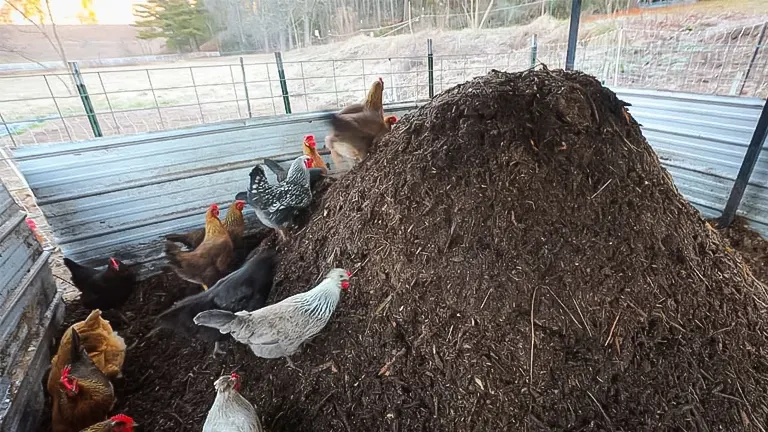
Before utilizing the bedding for composting, it is crucial to ensure its freedom from chemicals and pesticides. This precautionary step safeguards the quality of the compost and, consequently, the health of the garden.
Chickens, being remarkable animals to raise, bring a myriad of benefits to their human caregivers. Beyond providing fresh eggs, meat, companionship, and entertainment, they also contribute valuable droppings. With the appropriate bedding, these droppings become a valuable asset appreciated for their role as fertilizer in the garden. The composting process underscores the symbiotic relationship between chickens and sustainable gardening practices, creating a cycle of nourishment and environmental stewardship.
Closing Remarks
In conclusion, selecting the best bedding for chickens involves thoughtful consideration of various factors to ensure the well-being of our feathered friends and the maintenance of a healthy coop environment. From the classic choices of straw and shavings to innovative alternatives like hemp and recycled paper, each option comes with its unique set of pros and cons. The deep litter method, with its natural insulation and fertilizer-producing attributes, adds an intriguing dimension to coop management. Composting chicken manure becomes a rewarding endeavor with the right bedding, contributing to sustainable gardening practices.
As we weigh the preferences of our flocks and navigate the practicalities of coop maintenance, it becomes evident that the optimal bedding choice aligns with the specific needs of both chickens and caretakers. Whether prioritizing absorbency, odor control, or composting potential, the careful selection of bedding materials ensures a harmonious and healthful environment for our beloved chickens.
Frequently Asked Questions
- What is the best bedding material for baby chicks in a brooder?
For young chicks, newspaper and shredded paper are recommended due to their softness and gentleness. - Is straw a suitable bedding choice for chickens?
Yes, straw is a classic and affordable option, offering comfort and a natural environment for scratching and nesting. - Can sand be used for chicken bedding?
Sand is a popular choice, especially with the deep litter method, but it cannot be employed for this method due to its characteristics. - Is recycled paper a practical bedding option for chickens?
Recycled paper can be used in the brooder box, providing a soft and comfortable environment for young chicks. - What are the advantages of the deep litter method?
The deep litter method offers ease of use, natural warming insulation, and the creation of nutrient-rich fertilizer over time. - Can chicken manure be used directly in the garden?
Chicken manure, rich in nutrients, cannot be directly applied to a garden due to its high nitrogen content. - Which bedding materials are suitable for composting with chicken manure?
Virtually all types of bedding, including straw, shavings, hemp, and recycled paper, can be composted for use in the garden. - What should be considered when choosing bedding for chickens?
It is crucial to ensure that the chosen bedding is free from chemicals and pesticides to maintain the health of both chickens and the garden. - Are there risks associated with certain bedding materials, such as dust or respiratory issues?
Yes, smaller shavings and dusty materials like sawdust may pose respiratory concerns, emphasizing the importance of selecting appropriate bedding. - How often should bedding be changed in a chicken coop?
The frequency of bedding changes depends on the material used; for instance, recycled paper may require more frequent changes, while shavings may offer a longer lifespan. Regular cleaning is essential to prevent the accumulation of ammonia and maintain a healthy coop environment.
Your experiences matter! Feel free to share your firsthand insights and thoughts on the best bedding for chickens in the comments section below. Your valuable input could assist fellow chicken keepers in making well-informed decisions for their flocks! Let’s build a community of knowledge and support for optimal chicken care.

Edward Smith
Forestry AuthorWoodworking is about more than crafting; it's a harmonious connection with nature, mastering tools, and preserving our environment. I'm here to share my knowledge and experiences with you, forging a future where we can embrace wood's beauty and utility while safeguarding our forests' health and diversity.
13 comments
I use coarse sand in my coop and run. Easy to clean, like scooping kitty litter A poop board under the roosts makes cleans up easy.
Tracy Hallett
February 13, 2024 4:28 pmIs safe to use saw dust for Chickens and chicks?
Gideon Mbebe
January 17, 2024 12:14 pmHi Gideon! For chicks, it’s generally recommended to avoid using sawdust. Chicks learning to eat might ingest the small particles, which could lead to health issues. Instead, alternatives like large pine shavings, rice hulls, straw, or hay are often suggested. hope you're having a great day!"
Forestry
January 18, 2024 5:19 amYeah I love the article, message understood 👍
Timothy Nzaya
January 17, 2024 11:16 amWhat about coffee grinds I heard that was good and it's easy to clean it's like cat litter kind of an idea
Gabriele Richard
January 17, 2024 9:41 pmThe bedding I use contains eucalyptus which smells delightful! I also add straw to the nesting box.
Alison Oakes
January 15, 2024 10:44 amWith all due respect, I read this note for rearing poultry Production. Thank you
ADAMU ABDULLAHI
January 13, 2024 3:10 pmThanks so much for the valuable information on bedding. I'm just a home based chicken brooder, and needed such advice.
Phila Masango
January 13, 2024 1:04 amI've heard that grass clippings can be used like straw or hay in the coop, is this accurate?
James
January 12, 2024 2:02 pmHi, James. Absolutely, grass clippings can be utilized as bedding for chickens, but it’s crucial to consider a few key points. Firstly, fresh grass clippings should be adequately dried before use to prevent mold growth. This can be achieved by spreading them out on a tarp or in the back of a pickup truck and allowing them to dry in the sun. Dried grass clippings can be used alone or combined with other biodegradable bedding materials such as straw, hay, wood shavings, or shredded newspaper. However, they don’t mix well with sand. While dried grass isn’t highly absorbent, it complements almost any other bedding and is compostable, making it suitable for the deep litter method. It’s important to note that long and tough grass clippings may pose a risk of crop impaction in chickens. Also, ensure that the grass clippings are free from harmful chemicals like herbicides or pesticides. Chickens seem to enjoy picking through grass clippings, possibly in search of weed seeds and other edible greens. Regardless of the bedding choice, maintaining cleanliness and appropriate moisture levels in a chicken coop is vital for overall hygiene. Regular cleaning is a must. I hope this information helpful. Thank You for reading our article.




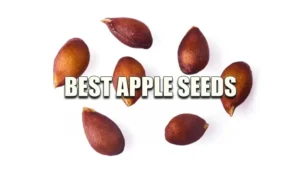








iam new on the platform and need guidance on free range and layer chicken rearing
Elias musonda da
March 10, 2024 7:14 amHi Elias, For beginners in free-range and layer chicken rearing, focus on providing a safe coop with suitable bedding like straw or wood shavings, balanced nutrition, regular health checks, and protection from predators. Ensure cleanliness and adhere to local regulations for a healthy flock. you can read forestry guides here in this link: https://forestry.com/guides/
Edward Smith
March 11, 2024 7:14 am